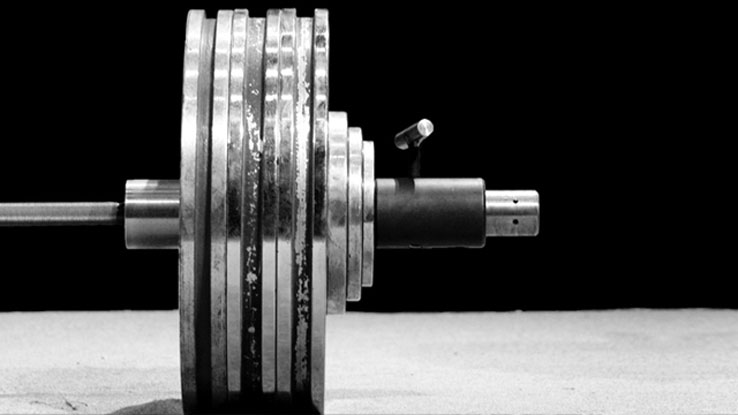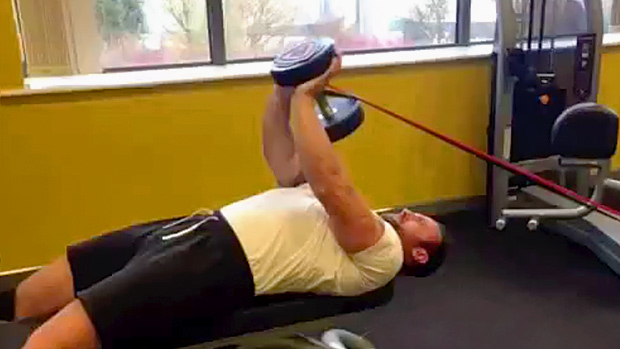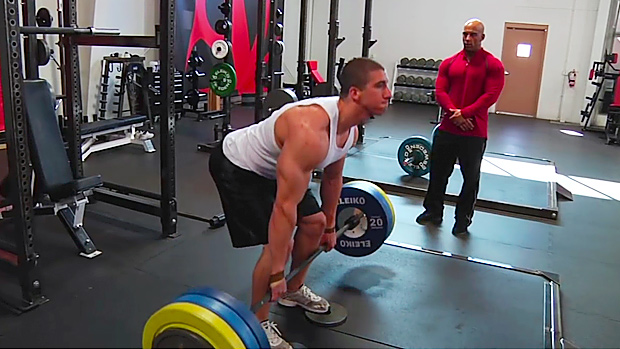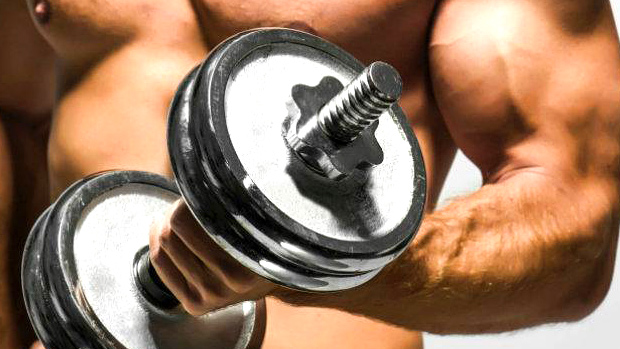This article isn't meant to wow you or teach you a bunch of new stuff.
Instead, look at it as a friendly reminder to start doing some of the stuff you used to do, but may have forgotten about.
As I get older, I learn less and less "new" stuff. What I'm finding, however, is that I'm constantly reminded of old things that I used to use with great success, but for some reason have moved away from.
So what you're about to read might be considered "nothing new" to the hardcore T Nation reader, but there's probably a few gems that even the most well-rounded trainee could benefit from inserting back into his or her program.
1. Use a planned deload week
This is an argument that never seems to go away. One guy swears he needs to deload every fourth or sixth week. Another says he never takes planned deloads and just "listens to his body."
Here's what I've found: The guy that takes a planned deload tends to see longer and more consistent gains. He's banged up less often, and as a whole, enjoys lifting more.
The other guy, however, tends to push and push until he ends up injured. This leads to an unplanned deload week, when his body has finally had enough and tells him he has to take a break or risk serious injury.
Which guy would you rather be?
Most lifters that are new to the iron game can get away with taking a break every 6-12 weeks. However, if you've been at it for a considerable length of time, I'd take a deload week every fourth week.
There's always that unique time when everything is going great and you end up cruising through a deload week and hitting PR's, but I'd argue that's the exception versus the rule.
Play it smart and you'll not only hit more PR's, you'll be injured less often, and training will be more enjoyable.
2. Include periods of high volume/base work
This is geared more towards the Olympic lifting and powerlifting crews, but it's applicable to everyone.
This past winter I trained extremely hard for a powerlifting meet and was probably the strongest I'd been in years. Immediately following the meet, I went back to the grind and started hitting it hard again. The problem was that about three months into my training, I found myself beat up. Bad.
This wasn't just simple joint irritation – this was a deep soreness that seemed to surround the musculotendinous junction at my knees and shoulders. As ridiculous as it may sound, I believe that my gains in muscular strength were outpacing the strength of my connective tissues.
I had to dial it all back and do a period of high-volume/base work. The goal wasn't to achieve "hypertrophy," or get bigger, but develop my connective tissues for more intensive loading later on.
To achieve this, you can do higher-rep sets (8-12 reps), or you can do fewer reps per set (5 or so), but work on around 60 seconds rest. The choice is yours, but the goal is the same – your body needs time to develop connective tissue strength if you want to be your best.
It's not sexy, but it's a critical component of long-term success.
3. Perform bilateral and unilateral lifts
You need to perform both bilateral and unilateral lifts. Saying you perform one exclusively at the expense of the other is asinine.
The strongest powerlifter in the world would probably see improvements in strength by incorporating a limited amount of split-stance and single-leg work into their programming.
In contrast, I can guarantee a frail and emaciated distance runner would benefit from doing less "functional" single-leg training and spending more time getting strong with bilateral lifts.
I already wrote an entire piece about this here, so I'd highly recommend reading it to see what unique benefits can be derived from each style of training.

4. Use appropriate rest periods
Rest periods are a forgotten component of program design.
On one hand you have the cardio bunnies that bounce from one exercise to the next with little (or no) rest, forfeiting some much needed intensity as a result.
On the other hand, you have guys that are supposedly training for "fat loss" that spend more time talking about last night's NBA game than they do training!
If your goal is fat loss, you need to be somewhere between 30 and 90 seconds of rest between sets.
If your goal is hypertrophy, somewhere between 60-120 seconds is ideal.
And finally, if pure strength is your goal, shoot for 3-5 minutes between sets.
The point? Figure out what your goal is, and then make sure that your rest periods are in-line with said goal.
5. Don't forget about foam rolling, mobility, and recovery work
With our ultimate goal of getting jacked, ripped, or hella strong, let's not forget about the little things that are important.
I'm a big believer in quality over quantity. I'd rather go through an extensive warm-up, dial my body in, and hit 2-3 quality sets of squats and call it a workout than go in stiff and try to rush through all of my main exercises. Foam rolling and mobility work may not look sexy, but it's damn important and I'm going to spare you the nitty-gritty details.
Deep down, you know I'm right.
6. Address weaknesses in your off-season
If you're a powerlifter, bodybuilder, or Olympic lifter, you have a defined "off-season" or "transition" phase after your competition.
This is the ideal time to work on any specific weaknesses you have, bring up lagging muscle groups or movement patterns, or simply regain a bit of general athleticism. If done properly, you can incorporate this seamlessly into the base/high-volume work described earlier.
If you're a guy that just likes to hang and bang in the weight room, you need to take a step back and think big picture. Most importantly, you need to set aside a dedicated block of time every year to devote to "off-season" training.
Failure to do this will inevitably lead to an injury, plateau, or at the very least, poor performance. Take one step back with the goal of taking two to three steps forward.
7. Don't forget about structural balance
I was incredibly lucky to be reading T Nation early in my training and coaching career.
While other sites and muscle mags were espousing crap like "50 pounds on your bench press in 8 weeks!", I was reading guys like Charles Poliquin and Ian King who were taking the exact opposite approach.
Instead of focusing on the main lifts, they were preaching the need to balance the body front-to-back and side-to-side. This approach not only led to a more balanced physique, but fewer injuries and improved long-term strength and physique development as well.
However, achieving "balance" in every program is an exercise in futility. Instead, it works much better to go full-steam-ahead in one direction, then work to maintain those gains and switch gears.
If you want to get really strong at squatting, squat 2-3 times per week, perhaps even more. But once you've maxed out those gains, cut the volume back drastically to try to maintain strength while following that up with a dedicated block focused on the posterior chain.
Give this approach a shot – I guarantee you'll like the results!

8. Use time under tension
Time under tension, or TUT, is another tool in the toolbox that we tend to forget about or ignore.
I'm guilty of this myself. I get into a training groove and the next thing you know, every exercise is performed at the same speed or cadence!
If you're unfamiliar with tempo training or how to incorporate it, start by reading this article.
Chances are you have a preferred way of performing your lifts. If you're a very reactive or explosive lifter, you likely try to do everything super explosive and fast. Try slowing the eccentric tempo down and really controlling your lifts; you'll not only develop connective tissue strength, you'll also put more stress on the active muscles.
But if you're one of those "slow and controlled" all the time lifters, you'll benefit greatly from working some explosive or speed work into your programming. You'll hit more fast-twitch fibers and feel more athletic to boot.
9. Make sure your EST (Energy System Training) is in line with your goals
This goes hand-in-hand with point #4. Too often, I see people who really don't have clearly defined goals and as a result have an eclectic mix of randomness in their workouts.
This is fine if you don't really care about progress, but since you're on this site, you likely expect more out of your lifting than most!
If you want to see the most rapid progress possible, every aspect of your training should be focused on achieving one or two goals. Some call this block periodization, some call it unidirectional loading.
The end goal is simple: Focus on one, or at most two goals, per block of training.
If your goal is fat loss, then everything should be dialed in for fat loss. Alternating supersets, high reps, incomplete rest periods, and to bring it together, your conditioning/energy system training should be glycolytic in nature.
In contrast, if your goal is maximal strength, you'd be better served performing energy system training that's aerobic in nature. This doesn't necessarily mean low intensity, long duration work. In fact, Joel Jamieson outlines 8 methods to improve the aerobic energy system in his book, Ultimate MMA Conditioning. While his methods are focused on developing the aerobic energy system, trust me, they're far from low-intensity work!
In the beginning, everything works. You can run a 5k while simultaneously running a 5x5 squat program and still see results.
But the older and more developed you become, the more specific you need to get with each training block. And a key constituent of that is smart EST programming that's in-line with your goals.
10. Training should be enjoyable
At the end of the day, training should be fun.
Sure, there are going to be workouts we all dread. Russian squat cycles, anaerobic threshold training, leg matricies, etc. – there are some workouts that just aren't fun.
But as a whole, if you walk in the gym each and every day with a feeling of dread, chances are you need a change.
If you're following the rest of the tips above and getting enough variety into your workouts, chances are this won't be an issue. But if you've focused on one goal or method of training for an extended period of time, this could be your body telling you it's time for a change.
That's A Wrap
So those are my 10 forgotten tips for smarter lifting. I could've easily stretched it to 15 or even 20 rules, as once you've been training for a while, you really do start to forget more about training than most newbies will ever know.
This is still just one man's thoughts, however. What would you add? What lessons have you learned over the years?





